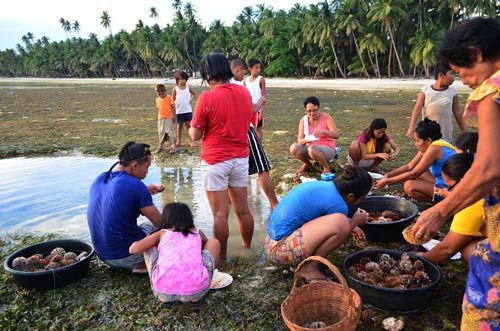I almost forgot I had these pictures and this rich seafood experience during our vacation in the Island of Fire, Siquijor.
Though my husband was born in a place where seawater is accessible, this kind of seafood practice is new to him and in fact, haven't experience eating Salwaki yet, that's what locals in Siquijor call this thorny in the outside yet umami in the inside variety of sea urchin, so get into our family's experience and read through.
This was taken in the town of San Juan in Siquijor. Shortly before the sun sets, a vast expanse of sea grass will surface after the low tide retreats far into the horizon, the locals will take advantage of the soft sun and trek this exposed vast sea part to find Salwaki and other sea shells - they call this 'manalwaki ug manginhas' a local term meaning to find sea urchin and seashells.
This part of the island is blessed to have an endless supply of this sea gift. Sea urchins come in 200 different species, there's the common black one with long spines locals call 'tuyom', which is non-edible and has the most dangerous spikes so they're left untouched.
The kind of sea urchin or 'salwaki' that the locals are looking for is this ...
Salwaki is best eaten at it's freshest, you have to cut the shell into half and you can see an orangey meat inside, locals just dip it in vinegar and they're good to go.
Finding 'Salwaki' is also a family activity, so often they'll bring along with them 'luto' or rice, this has been a practice ever since, it's not just a family bonding, it's also a great way to save them cooking stuff.
Bottled salwaki is salty, it's the best alternative to 'bagoong', (salted anchovies), only that salwaki has shorter shelf life, hence, you have to finish it shortly after it's being bottled.
Best when paired with boiled green banana and 'tutong'.














Post a Comment
Thank you for dropping by, check back again for new updates or feel free to subscribe to my blog so you won't miss a post. Have a lovely day!